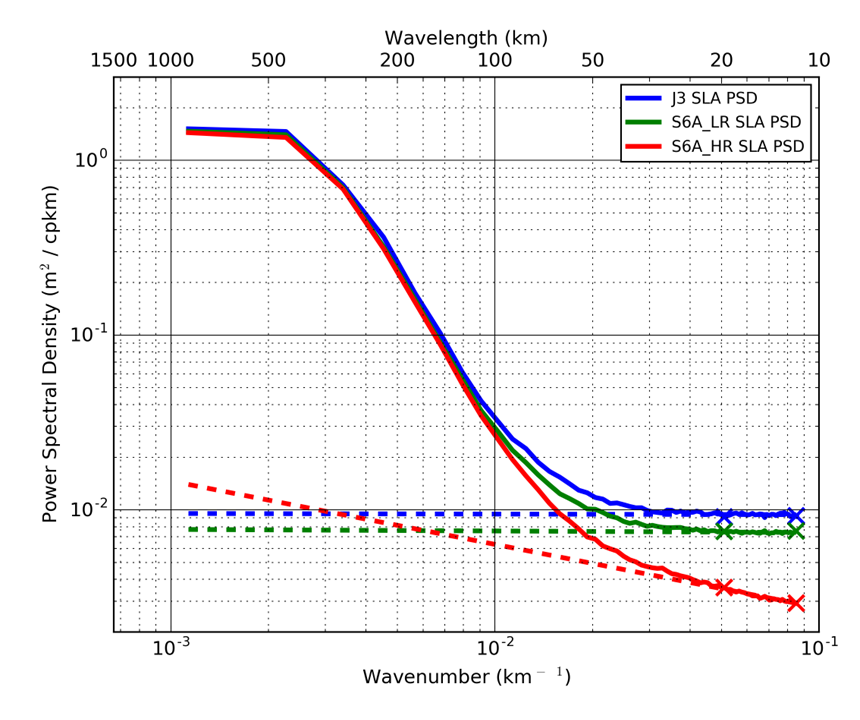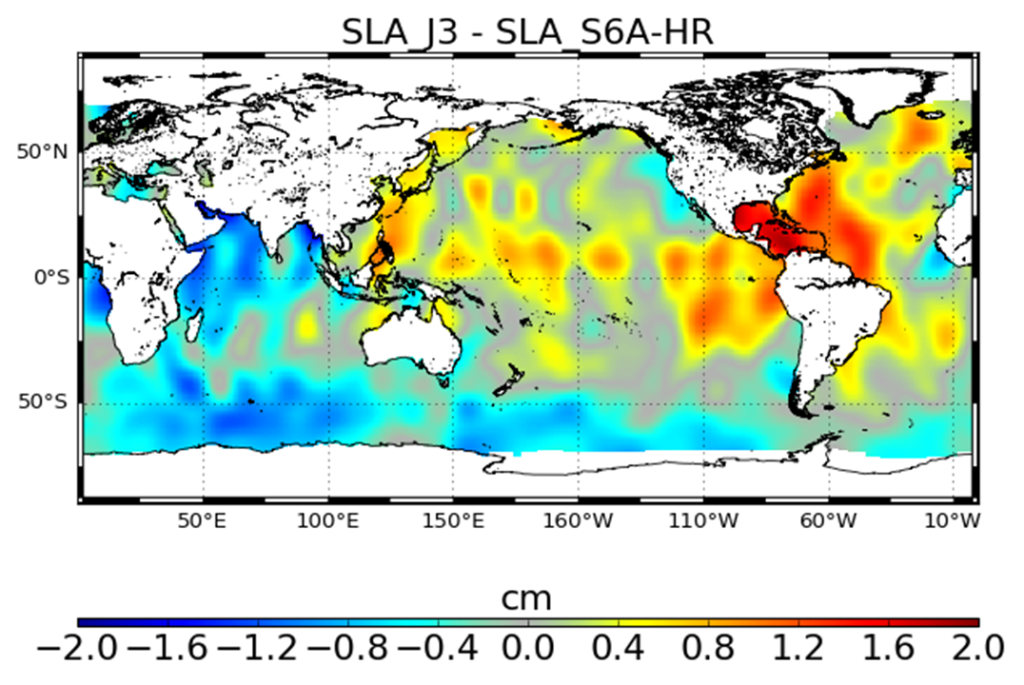Sentinel-6A in DUACS processing
DUACS system version : 19.1.0
Implementation date : April 2022
The Sentinel-6A mission was launched on November 21st2020. It is designed to provide continuity to TOPEX/Poseidon, Jason-1, OSTM/Jason-2 and Jason-3 missions. The mission is based on the same orbital features and its geographic coverage is 66°S – 66°N. With the DUACS 19.1.0 version, Sentinel-6A was introduced in the SL-TAC system as the new reference mission instead of Jason-3. The introduction of Sentinel-6A is effective since April 6th 2022 (Near Real Time production). On the same day, Jason-3 was temporary deactivated from the DUACS system. This mission was shifted in an interleaved orbit and reintroduced in the system afterwards.
Sentinel-6A is operating in two different modes:
- Low Resolution (LR) mode: based on an LRM instrument as the one used for Jason-3.
- High Resolution (HR) mode: based on SAR technology as the one used for Sentinel-3A/B.
The first year of measurement is done in the formation flight, where Sentinel-6A and Jason-3 are acquiring data using the same ground track separated by few seconds. This step allows the complete cality and validation (CalVal) assessment of the mission.
Sentinel-6A measurement with HR mode are consistent with Jason-3 measurements. Few differences can be observed linked to the capabilities of the different instruments. With the SAR technology, Sentinel-6A shows reduced errors at small-mesoscale level (see also Along-track measurements – main sources of errors). The residual noise observed with Sentinel-6A HR is nearly 60% lower than the one observed on Jason-3 (estimation done on 1 Hz measurement over the Nov-Dec 2021 period) (Figure 1). Nevertheless, its capability to ensure the continuity of the MSL signal still need to be assessed. The HR mode measurement will be used in NRT L3/L4 processing.
Some SLA biases are however observed between Sentinel-6A and Jason-3. A mean global bias between STC measurements of the two missions is estimated to be 5.7 cm. Large scale patterns are also observed at regional extent (Figure 2). They range ±1cm and vary with time. Different bias corrections are implemented at L2P and L3 processing step in order to ensure a smooth transition between Jason-3 and Sentinel-6A measurements. The global mean bias will be fully corrected. The regional biases will be progressively introduced into the NRT products.

